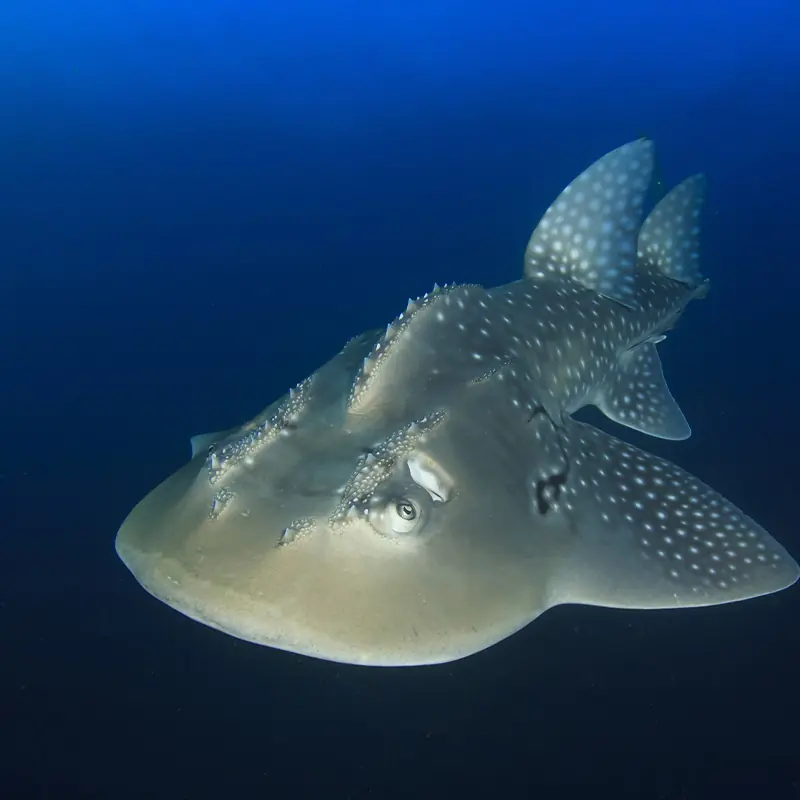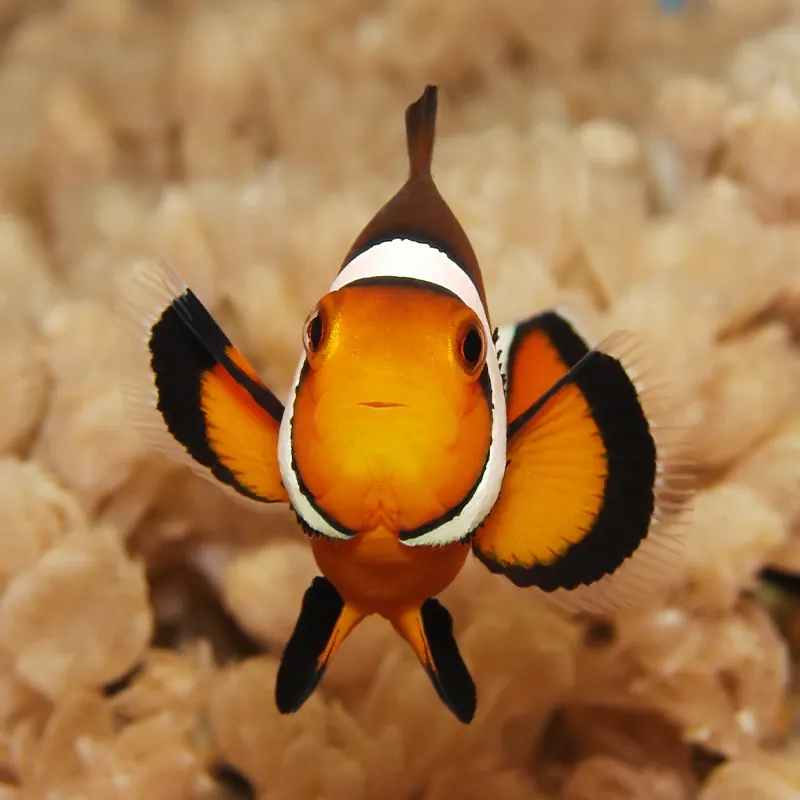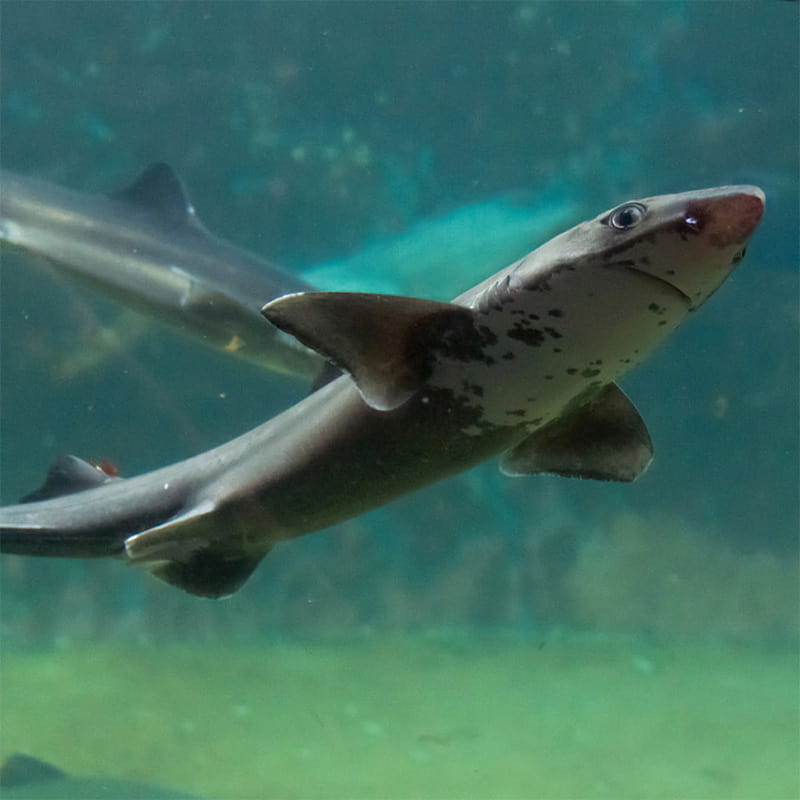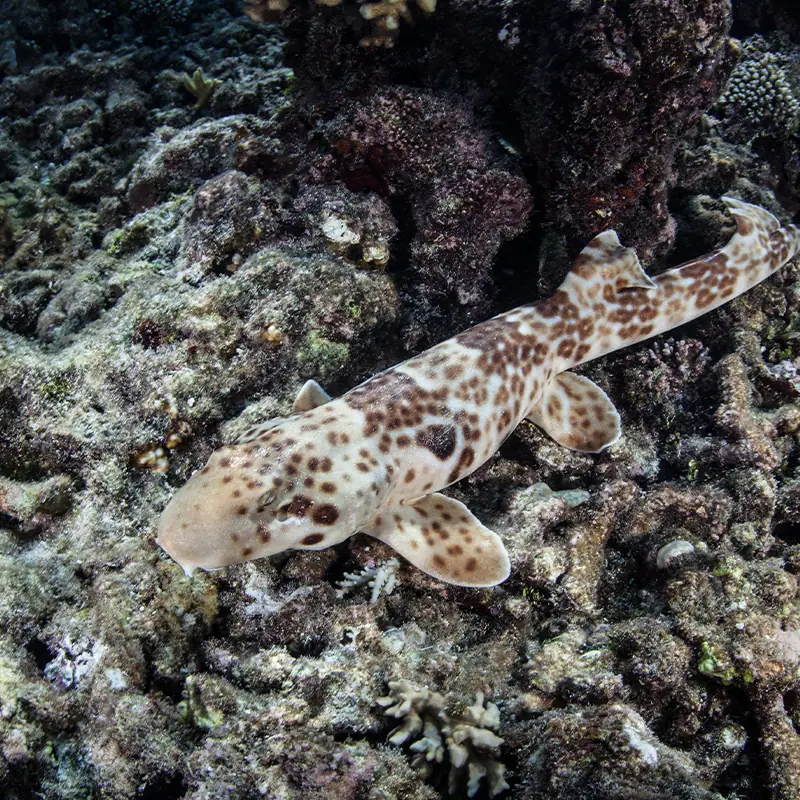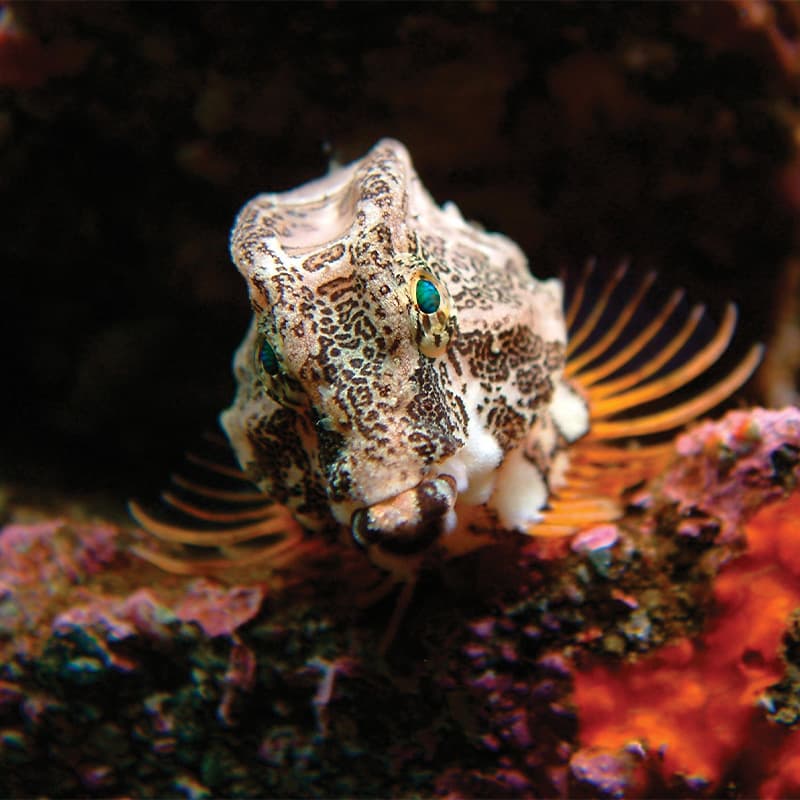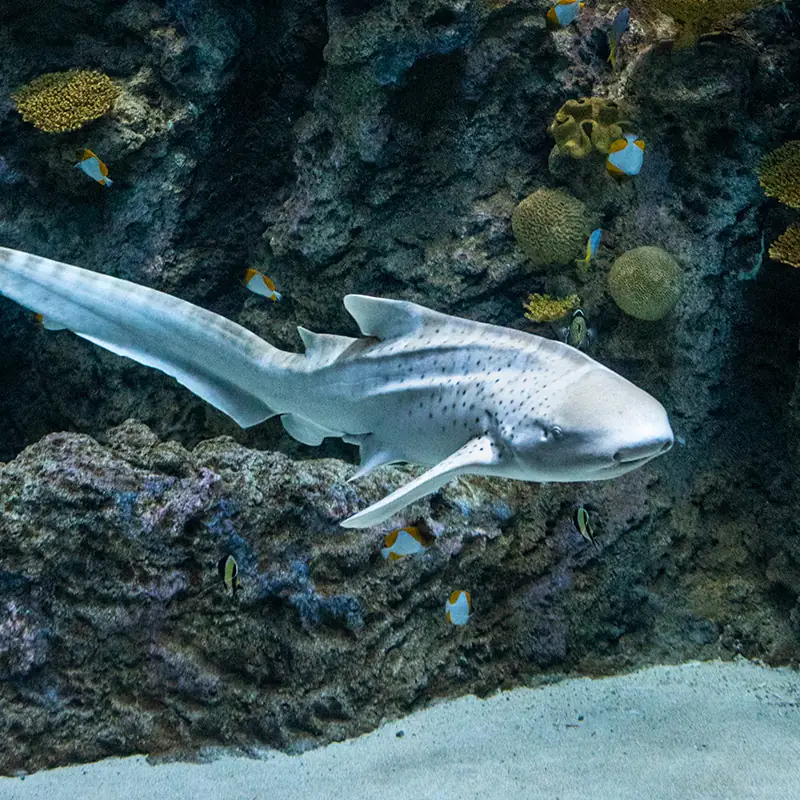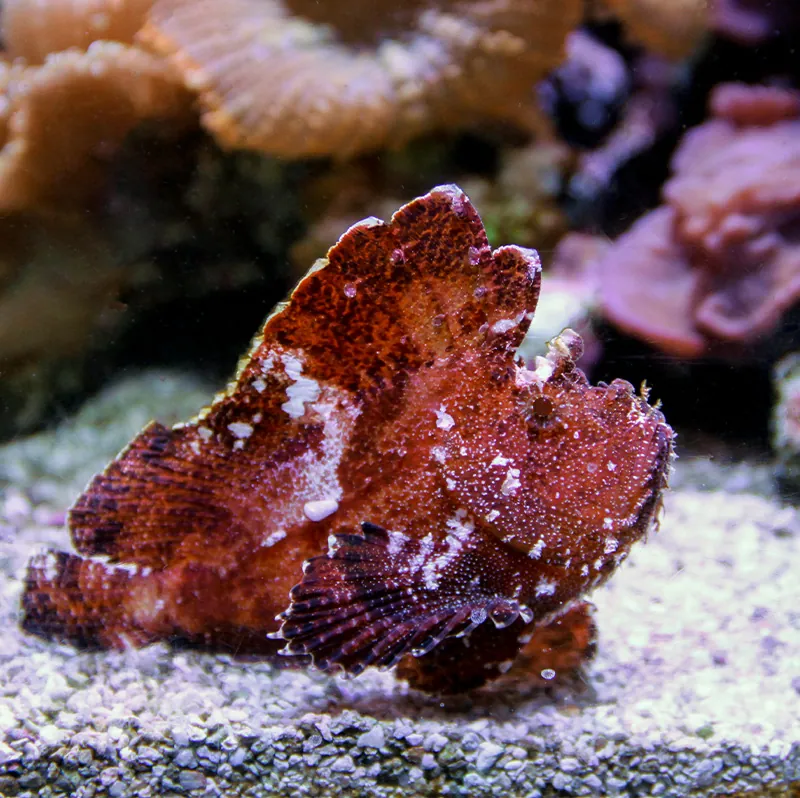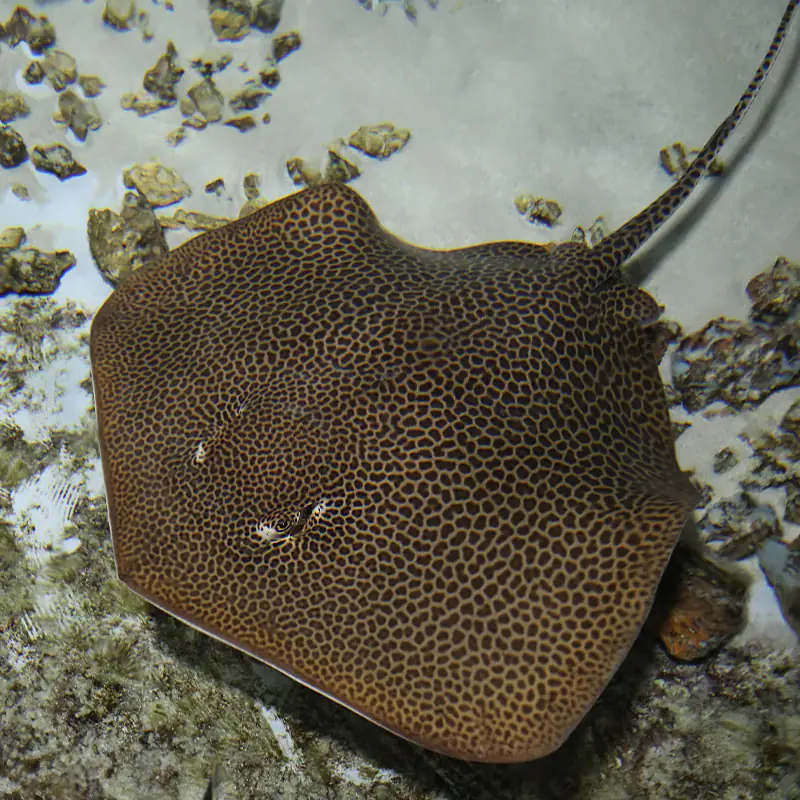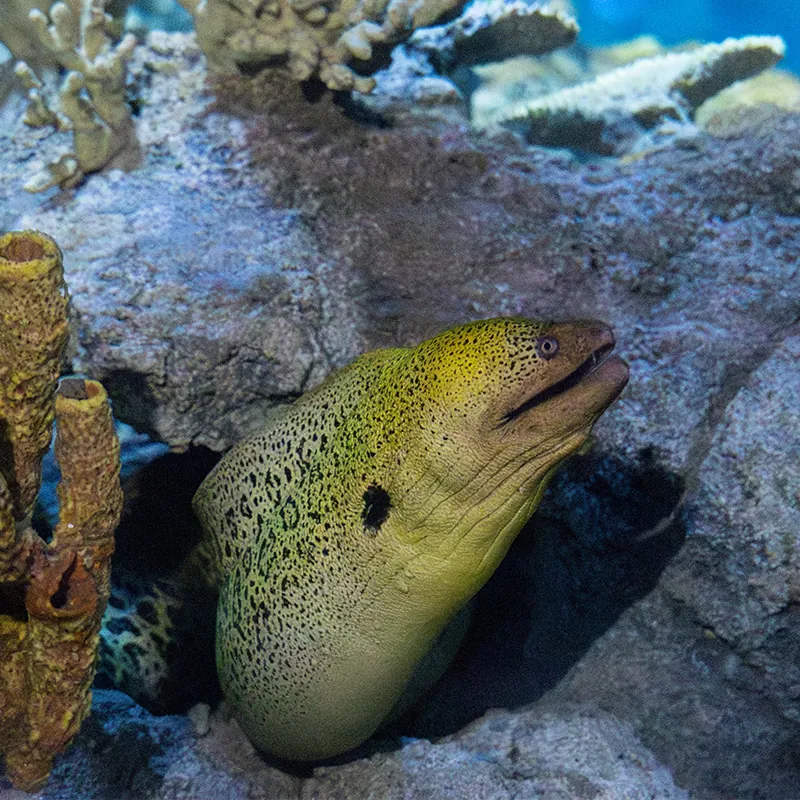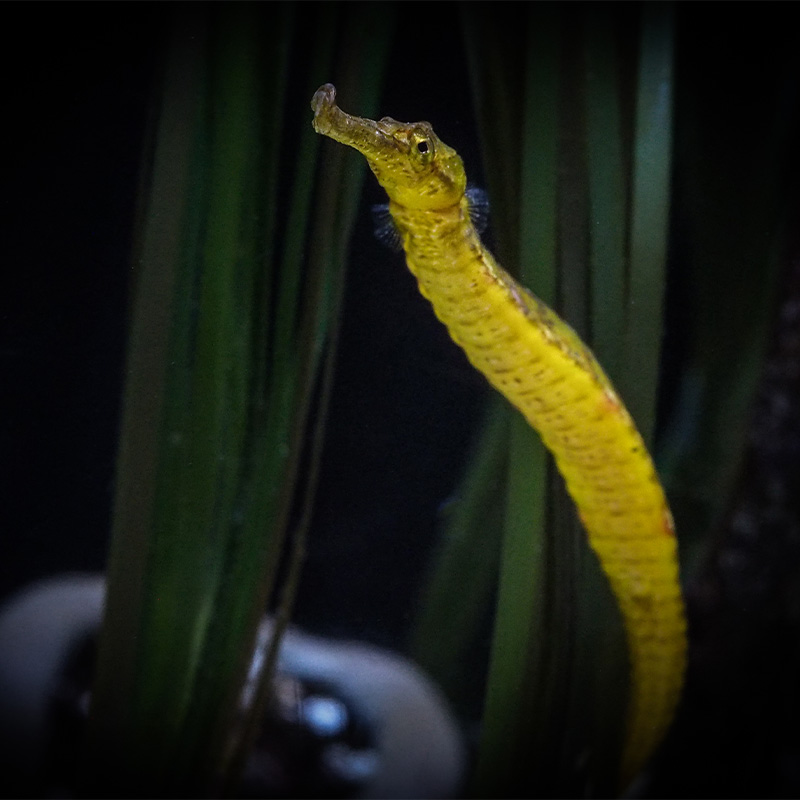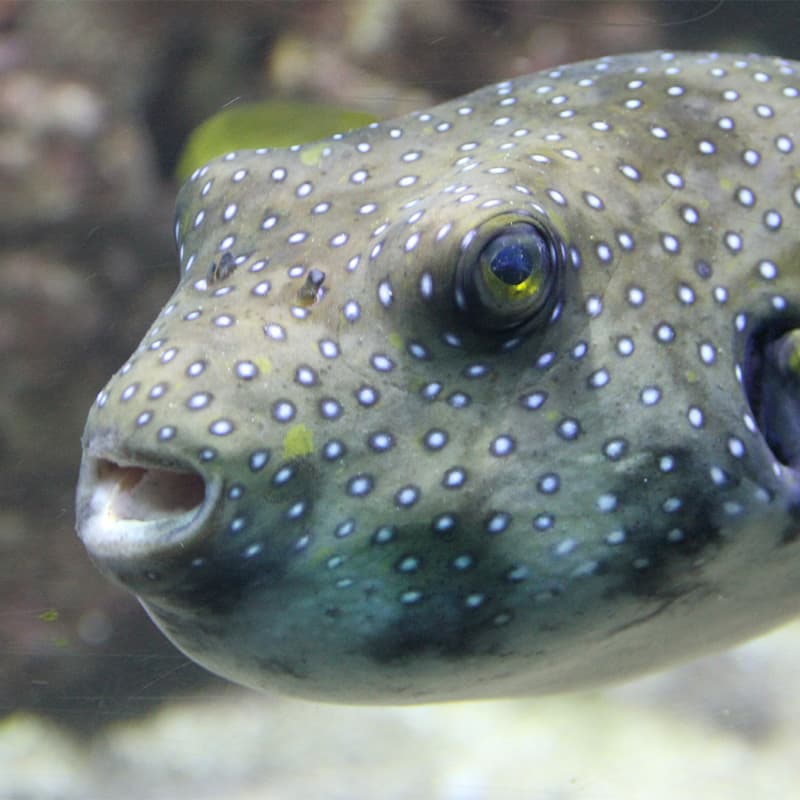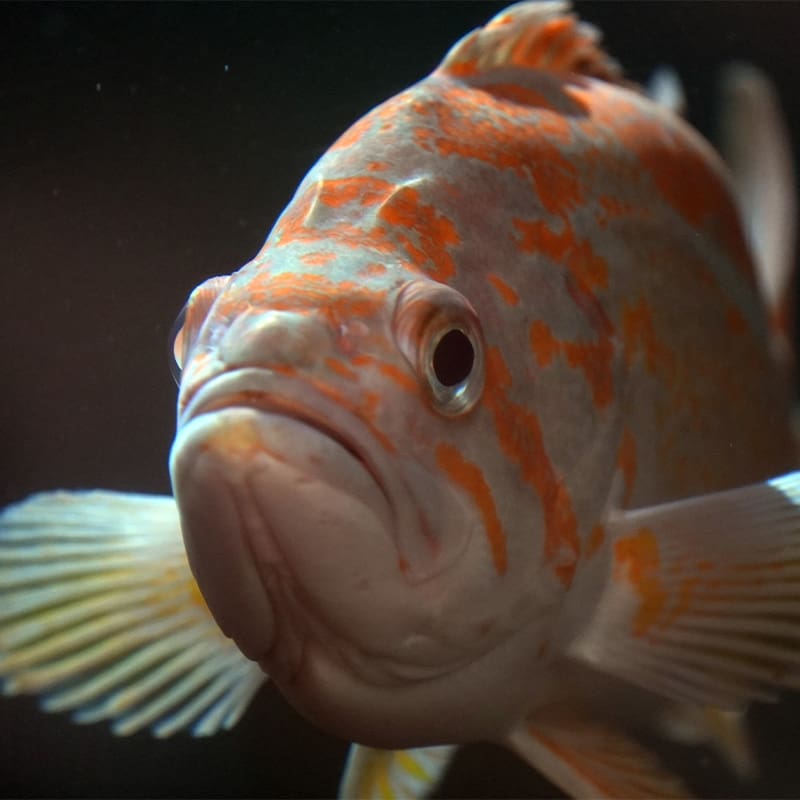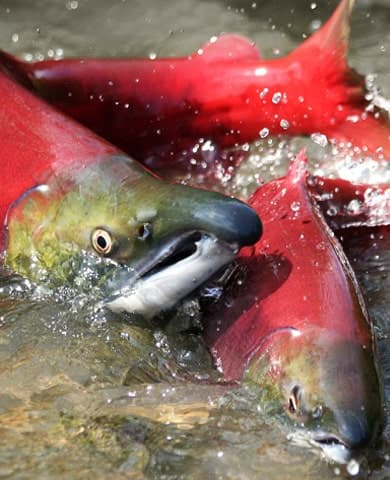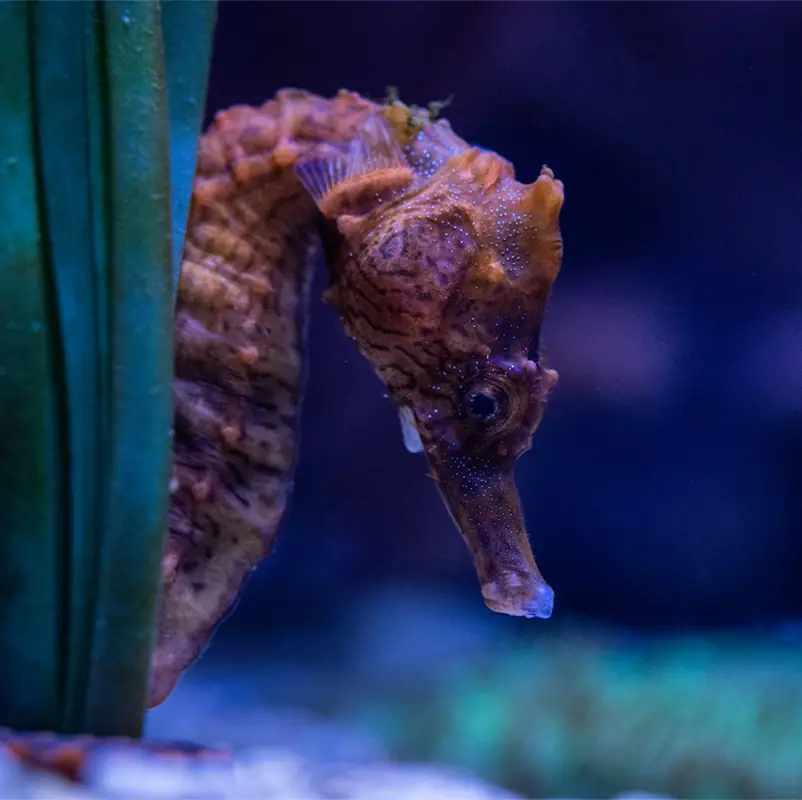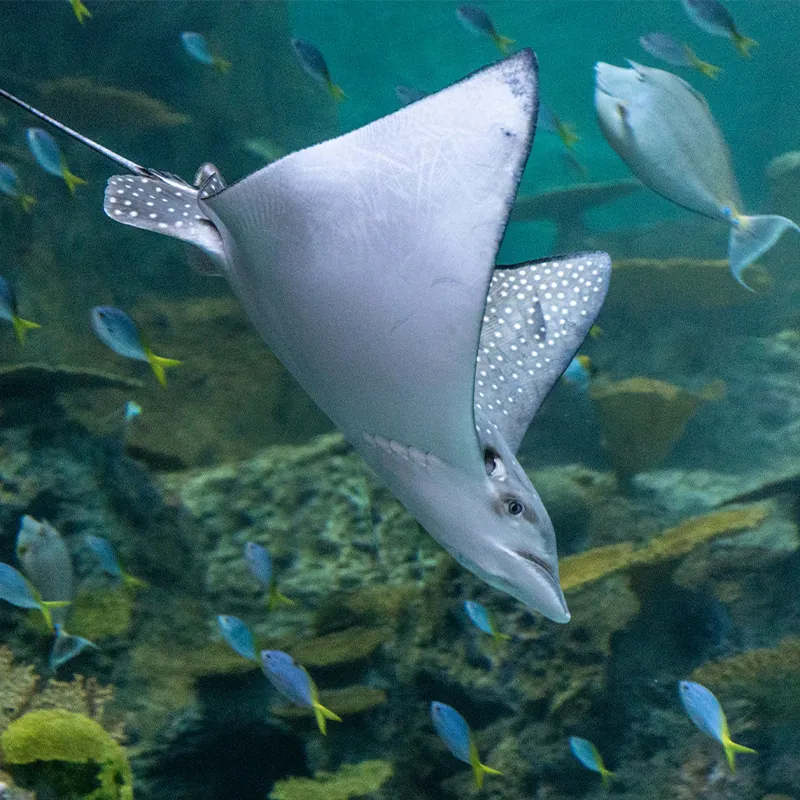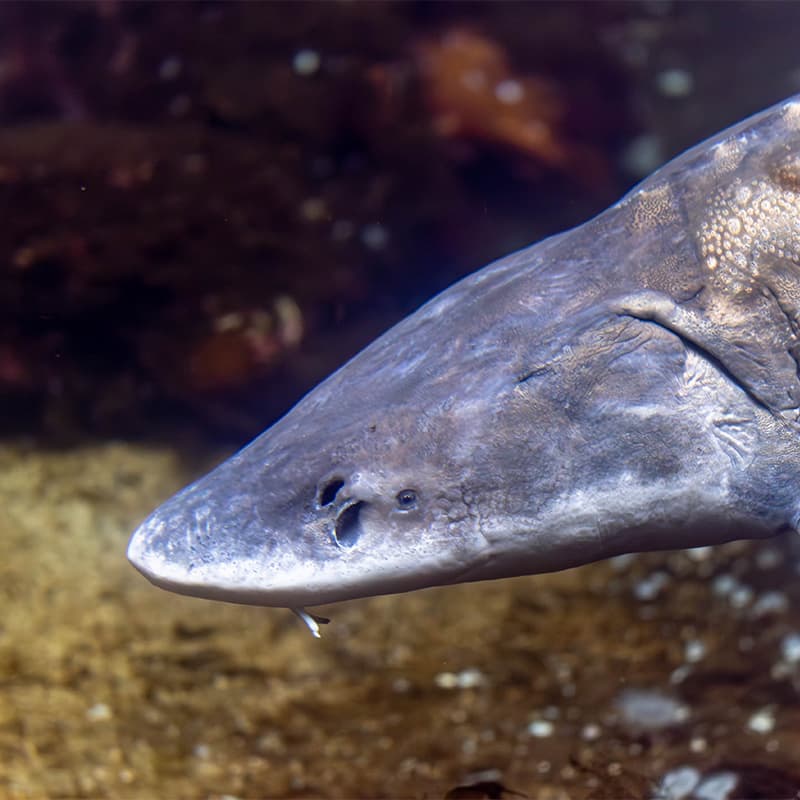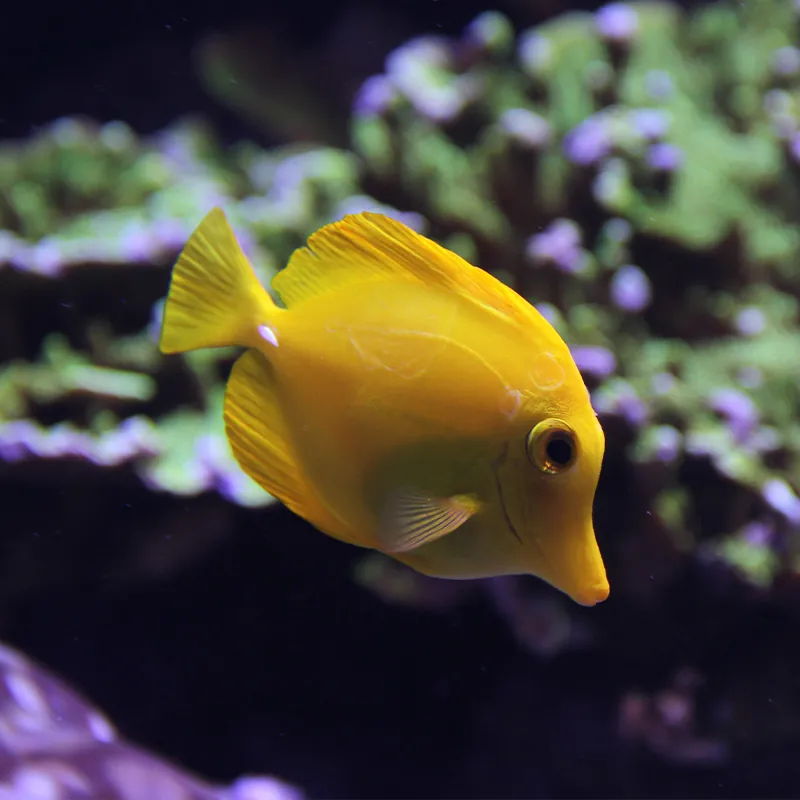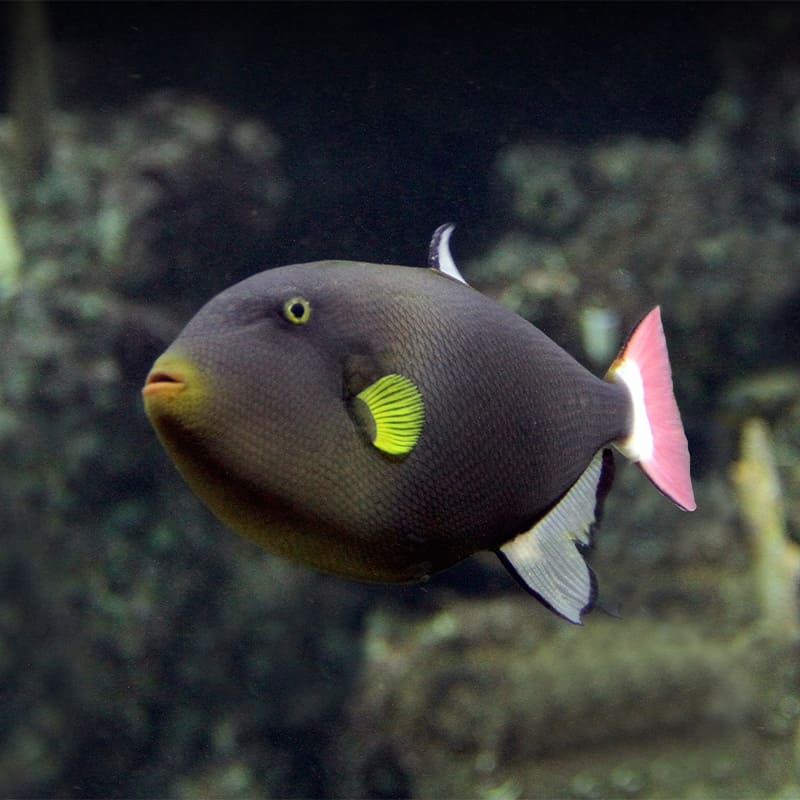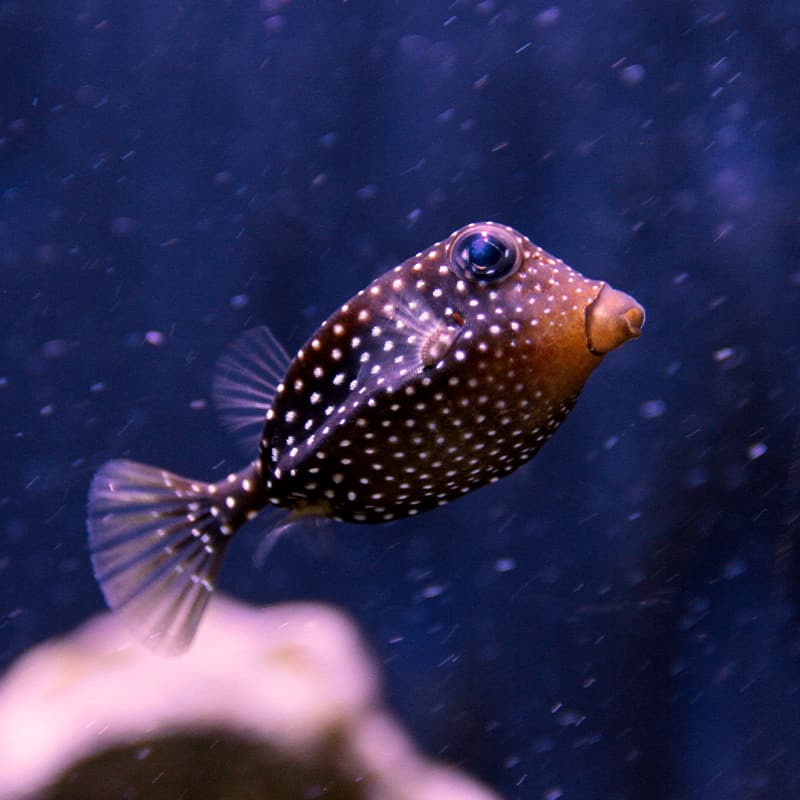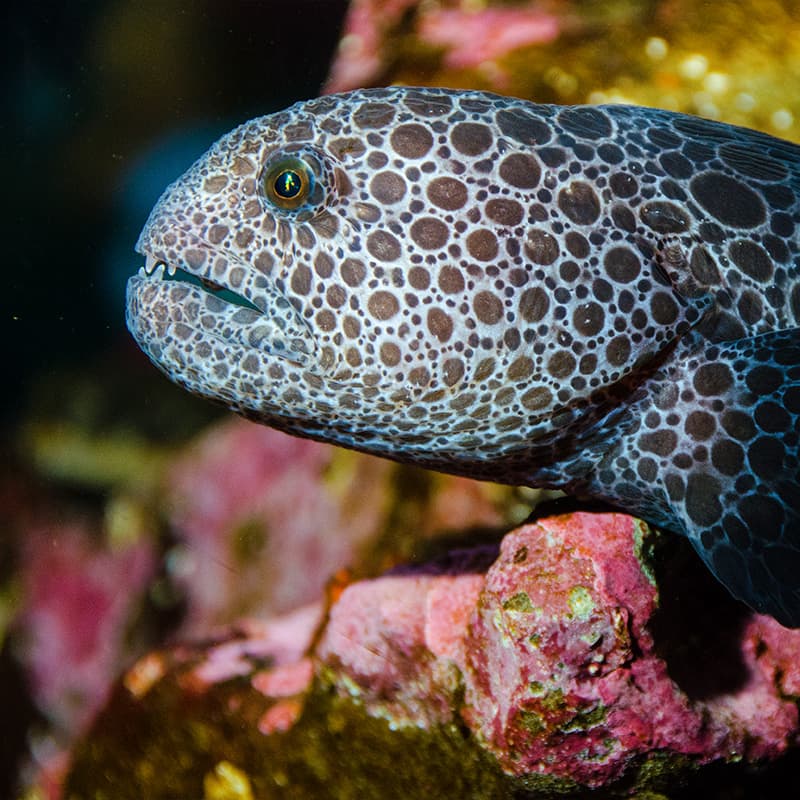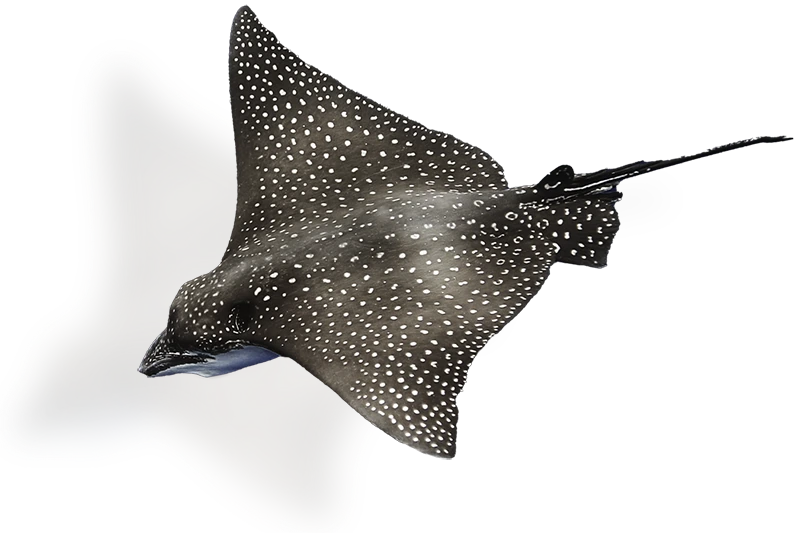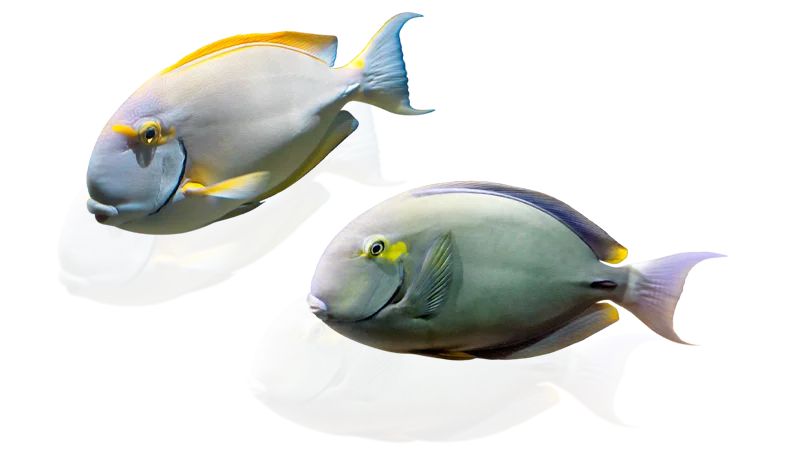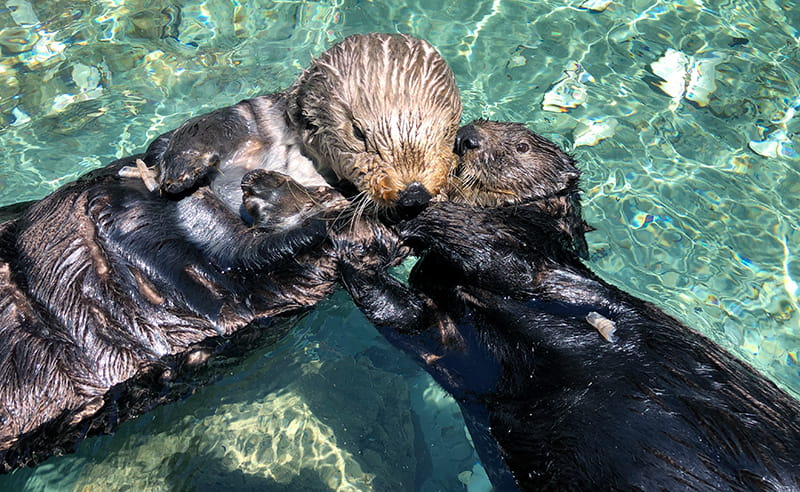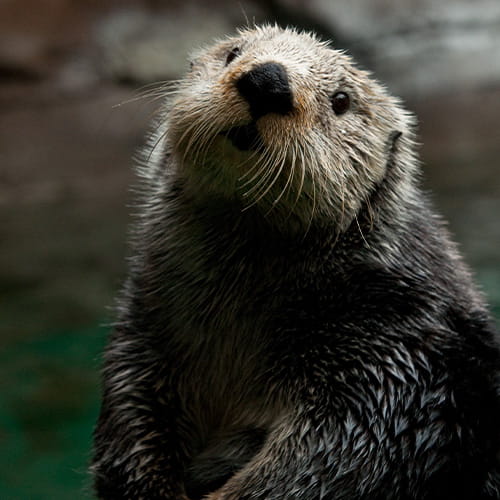- Fish
Blue-spotted stingray
A ray of many names
These rays are also known as bluespot stingarees, Kuhl’s stingray and pari kodok, among other names. They’re frequently mistaken for the similarly named blue-spotted ribbontail ray. In fact, they were reclassified and given a new species name, Neotrygon kuhlii, in 2008. While they have multiple names and many similarities to other ray species, they also have plenty of attributes that make them uniquely fascinating.
At the Aquarium
- The Archipelago, Ocean Pavilion
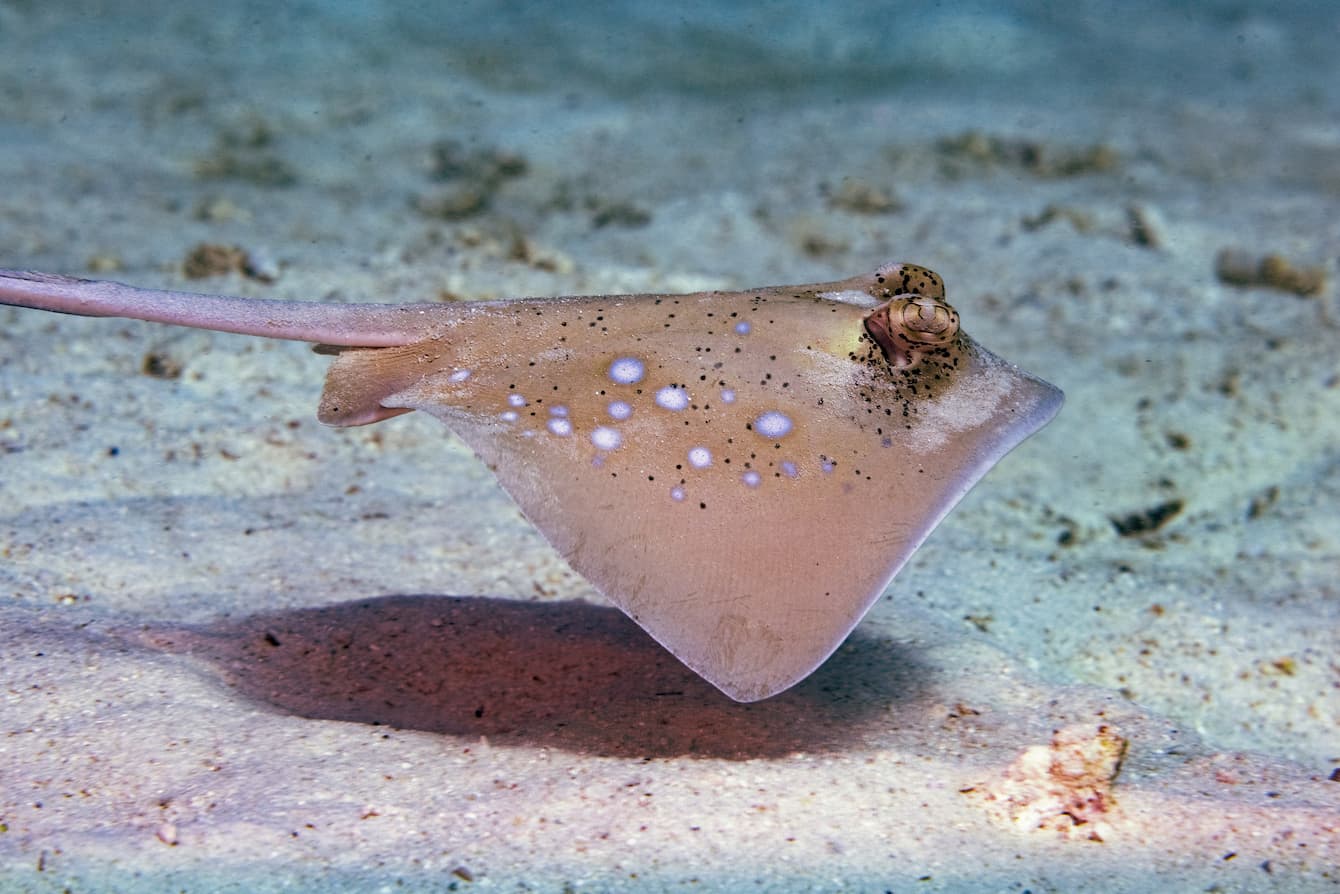
Stingray snapshot
Blue-spotted stingrays are found in the tropical waters of the Indo-Pacific, at depths of up to 300 feet. As bottom feeders, they’re drawn to sandy or muddy environments and are often seen buried, with only their eyes exposed, while hiding from predators. They may also spend time around rocky coral reefs and seagrass beds. Adult females live to be about 13 years old; for males, it’s 10 years.
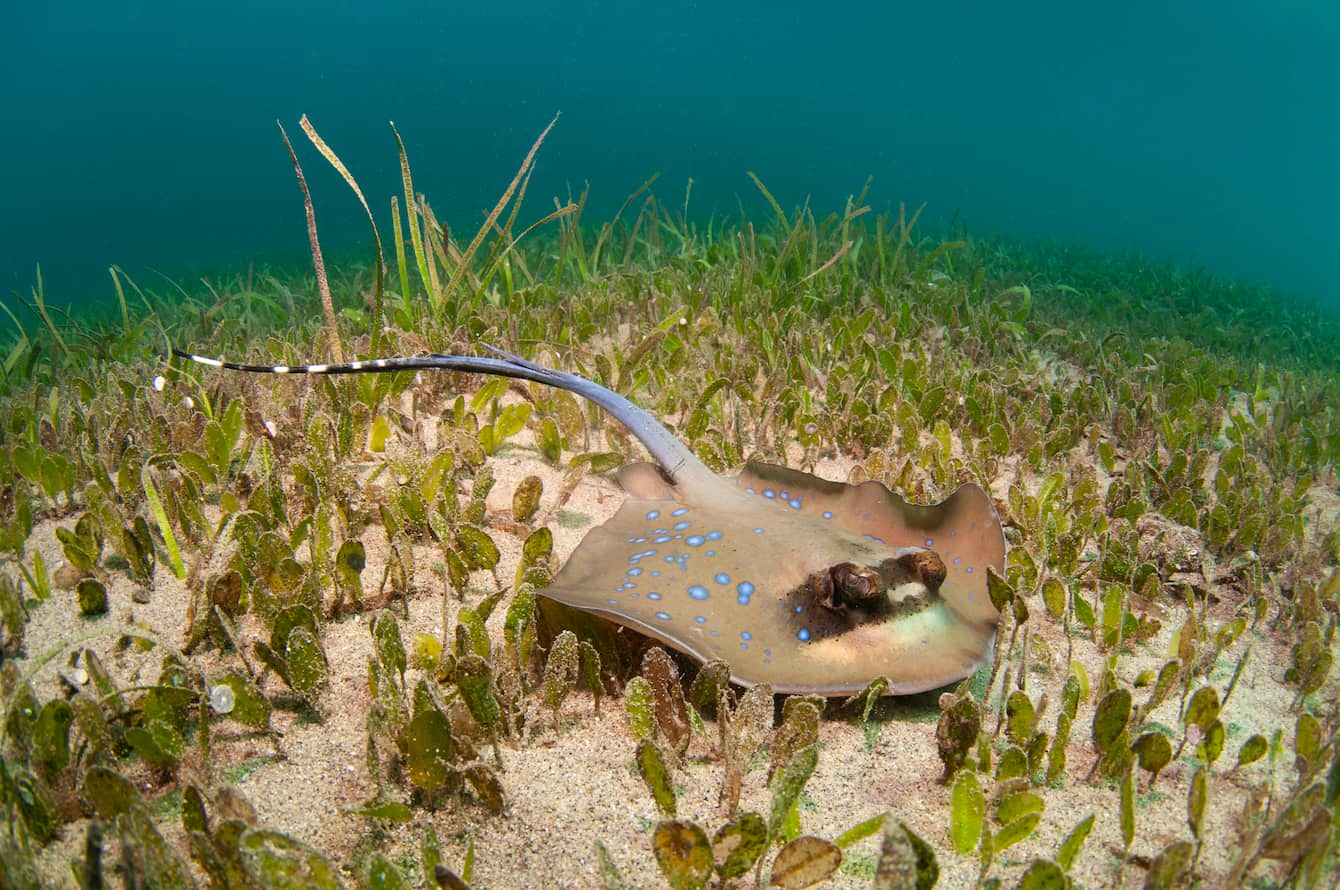
Spots that send a message
These animals have a rhomboid-shaped body that can be up to 18 inches in diameter; including their tails, they can be about 28 inches long. The easiest way to differentiate them from blue-spotted ribbontail rays is their tails, which have a black-and-white pattern near the tip. Their dark green bodies are highlighted with the blue spots that inspired their common name. Those spots serve as a warning about the ray’s two venomous spines, located at the base of their tail.
Dinner under pressure
Blue-spotted stingrays eat shrimp, small fish, mollusks (such as snails and clams), crabs and worms. Like other stingray species, they overpower their prey by pinning it into the mud or sand with their fins. Once the prey is immobilized, the stingray moves the meal into its mouth, located on the underside of its body and equipped with small, plate-like teeth to crush shells and get at the tender morsels inside.
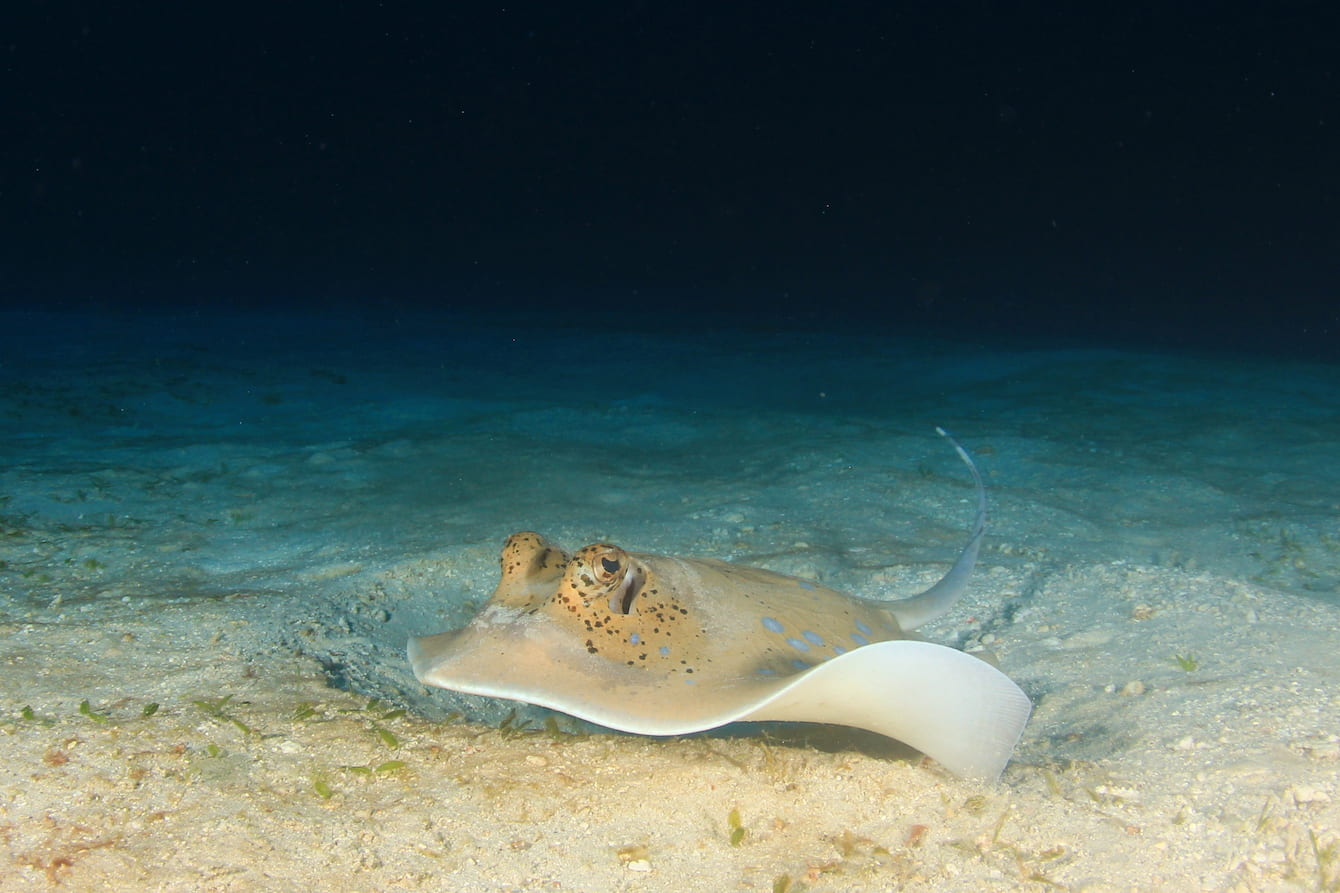
Made in the (counter)shade
Like many marine animals, blue-spotted stingrays exhibit a helpful form of camouflage called countershading. Their top side is darker to blend in with the water and/or seafloor when viewed from above, and their bottom side is lighter to blend in with the sky when viewed from below. Orcas in our local waters share this characteristic too!
Feeling the sting of habitat loss
Blue-spotted stingrays haven’t been studied enough to know whether their populations are healthy—they’re listed as Data Deficient by the International Union for Conservation of Nature. What is known, though, is that destruction of coral reefs is a major threat to their survival. Human activities are causing this harm, and human actions can start healing it. No matter where you live, you can make a difference. Visit our Act for the ocean webpage for ideas!
Quick facts
These stingrays are often seen buried, with only their eyes exposed, while hiding from predators.
Their bright coloration serves as a warning to potential predators about the venomous spines at the base of their tails.
Like many stingrays, they pin their prey into the seafloor before eating it.
